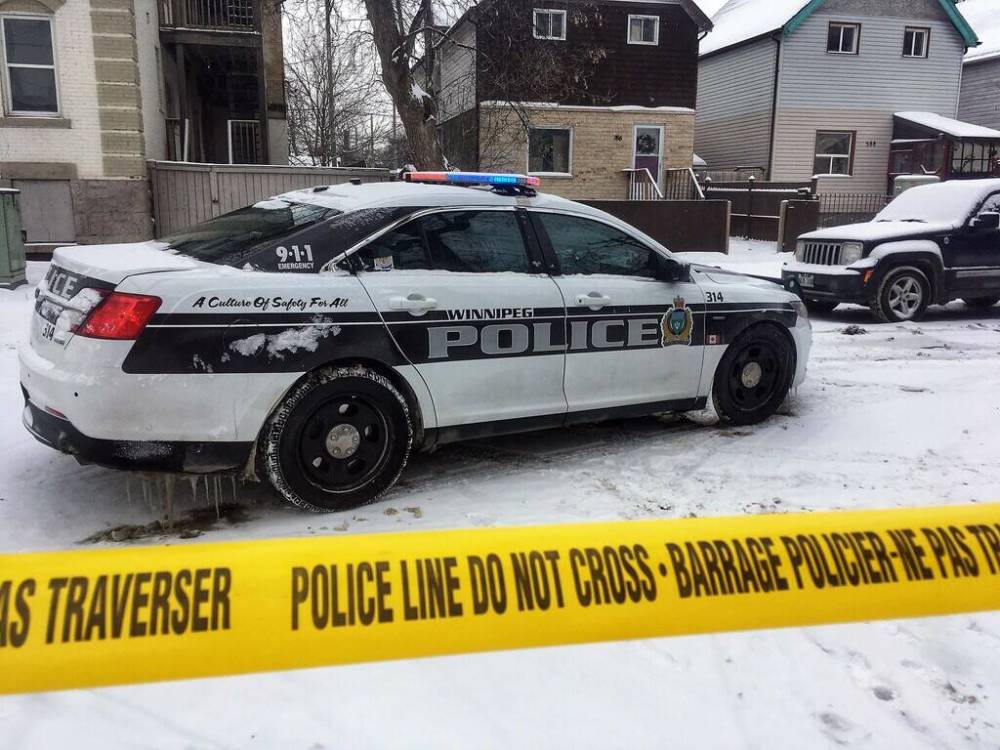Indigenous Manitobans harder hit by crime: study
Advertisement
Read this article for free:
or
Already have an account? Log in here »
To continue reading, please subscribe:
Monthly Digital Subscription
$1 per week for 24 weeks*
- Enjoy unlimited reading on winnipegfreepress.com
- Read the E-Edition, our digital replica newspaper
- Access News Break, our award-winning app
- Play interactive puzzles
*Billed as $4.00 plus GST every four weeks. After 24 weeks, price increases to the regular rate of $19.00 plus GST every four weeks. Offer available to new and qualified returning subscribers only. Cancel any time.
Monthly Digital Subscription
$4.75/week*
- Enjoy unlimited reading on winnipegfreepress.com
- Read the E-Edition, our digital replica newspaper
- Access News Break, our award-winning app
- Play interactive puzzles
*Billed as $19 plus GST every four weeks. Cancel any time.
To continue reading, please subscribe:
Add Free Press access to your Brandon Sun subscription for only an additional
$1 for the first 4 weeks*
*Your next subscription payment will increase by $1.00 and you will be charged $16.99 plus GST for four weeks. After four weeks, your payment will increase to $23.99 plus GST every four weeks.
Read unlimited articles for free today:
or
Already have an account? Log in here »
Hey there, time traveller!
This article was published 19/07/2022 (1185 days ago), so information in it may no longer be current.
Indigenous people in Manitoba cities are more than twice as likely as non-Indigenous residents to be victims of violence or theft.
The divide between the two groups is the largest in Canada, a newly released Statistics Canada study shows.
University of Winnipeg criminal justice professor Michael Weinrath said the figures are backed up by research.

“Indigenous people are more likely to be victims of crime (and) more likely to be victims of violent crime. Part of that is what we know as criminologists: one of the most consistent correlations that you see with victimization, particularly violent victimization is the relationship with poverty,” said Weinrath.
The federal agency also reported a stark difference in the homicide rate between Indigenous and non-Indigenous populations in Manitoba.
In 2020, the homicide rate for Indigenous Manitobans was 15.32 per 100,000 people, compared with 1.26 per 100,000 for non-Indigenous residents. Forty Indigenous people were slain in 2020, compared with 14 non-Indigenous people.
(The national homicide rate was 10.05 per 100,000 people for Indigenous victims, and 1.41 for non-Indigenous.)
The federal agency said First Nations, Métis and Inuit are over-represented among victims of violence across Canada.
Research has suggested a link between victimization and past and present government policies, including the residential school system, marginalization and institutionalized racism, the agency wrote.
Those policies have resulted in the disruption of community and family structures, and caused intergenerational trauma, which are both linked to violent victimization of Indigenous people, the agency said.
Weinrath said it boils down to poverty.
“If you’re in really poor class of individual, you’re more likely to be victimized. Indigenous people, as we know, are more over-represented in the poorer parts of Canadian society… There’s a strong correlation of violent victimization and poverty, but that’s exacerbated for Indigenous people, particularly in our inner cities.”
However, he noted Manitoba has a high rate of crime overall, which is reflected in more specific research.
“The other thing to think about is Manitoba has a high rate of victimization, high rate of crime, high rate of serious, violent crime… it’s not a great thing, but it’s consistent with what we know about the breakdown of crime in our province… that’s going to show up in our studies and surveys,” he said.
The study used self-reported data from the agency’s 2019 general social survey on Canadians’ safety, as well as self-reported data from a 2018 safety survey and 2020 police-reported data on homicides.
Nearly one-quarter — 23 per cent — of Indigenous people in Manitoba reported they had been victims of at least one violent crime or theft of personal property in the 12 months preceding the 2019 survey, compared with 10 per cent of non-Indigenous people.
That difference was mainly because of high victimization rates in urban areas, StatCan said. In rural areas, 5.4 per cent of Indigenous people and five per cent of non-Indigenous people reported being victims of a crime against the person.
The study also showed in 2019 more Indigenous people 15 or older (16.4 per cent) had little or no confidence in their local police service or RCMP detachment compared with non-Indigenous people (12.2 per cent).
erik.pindera@freepress.mb.ca
Twitter: @erik_pindera

Erik Pindera is a reporter for the Free Press, mostly focusing on crime and justice. The born-and-bred Winnipegger attended Red River College Polytechnic, wrote for the community newspaper in Kenora, Ont. and reported on television and radio in Winnipeg before joining the Free Press in 2020. Read more about Erik.
Every piece of reporting Erik produces is reviewed by an editing team before it is posted online or published in print — part of the Free Press‘s tradition, since 1872, of producing reliable independent journalism. Read more about Free Press’s history and mandate, and learn how our newsroom operates.
Our newsroom depends on a growing audience of readers to power our journalism. If you are not a paid reader, please consider becoming a subscriber.
Our newsroom depends on its audience of readers to power our journalism. Thank you for your support.

